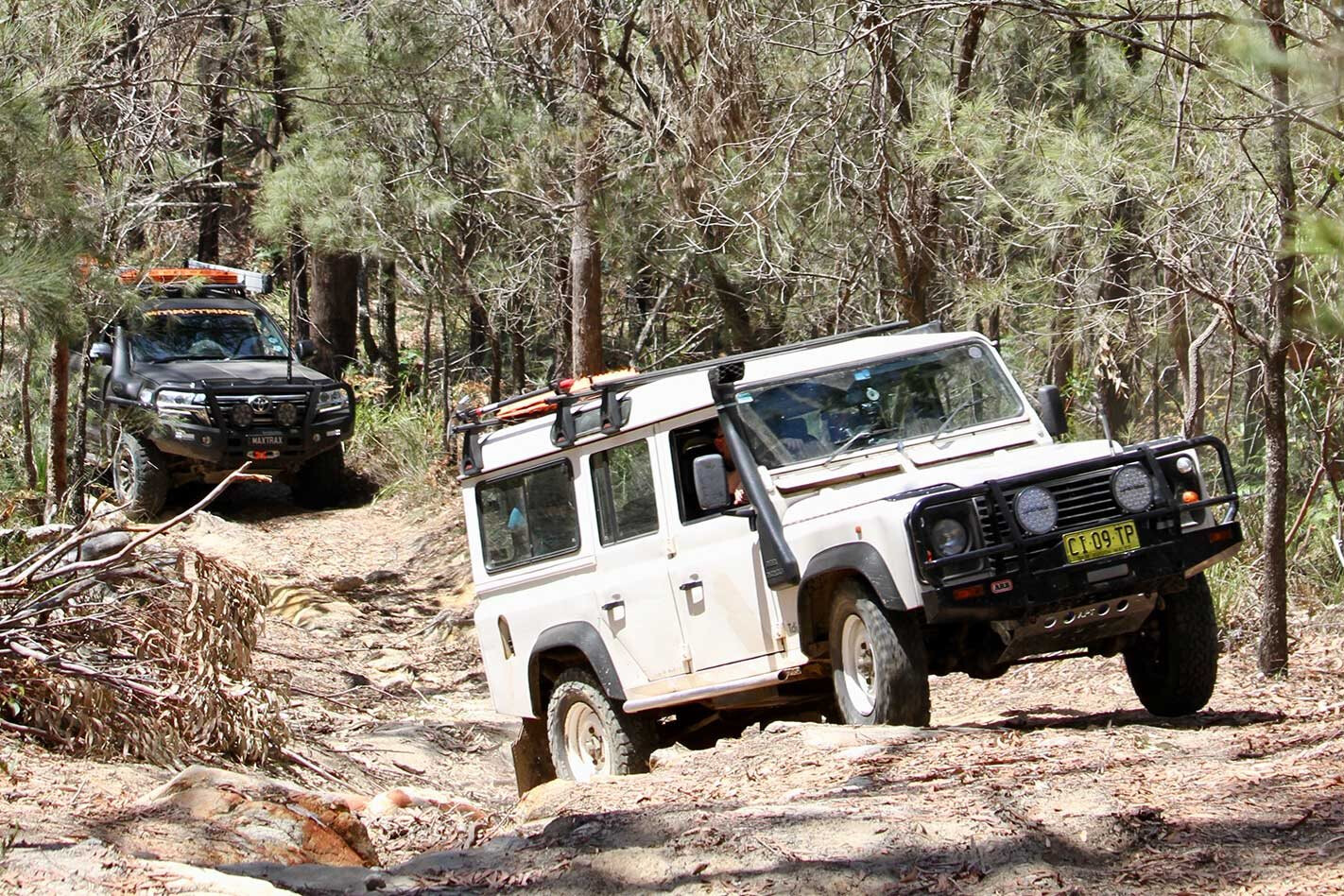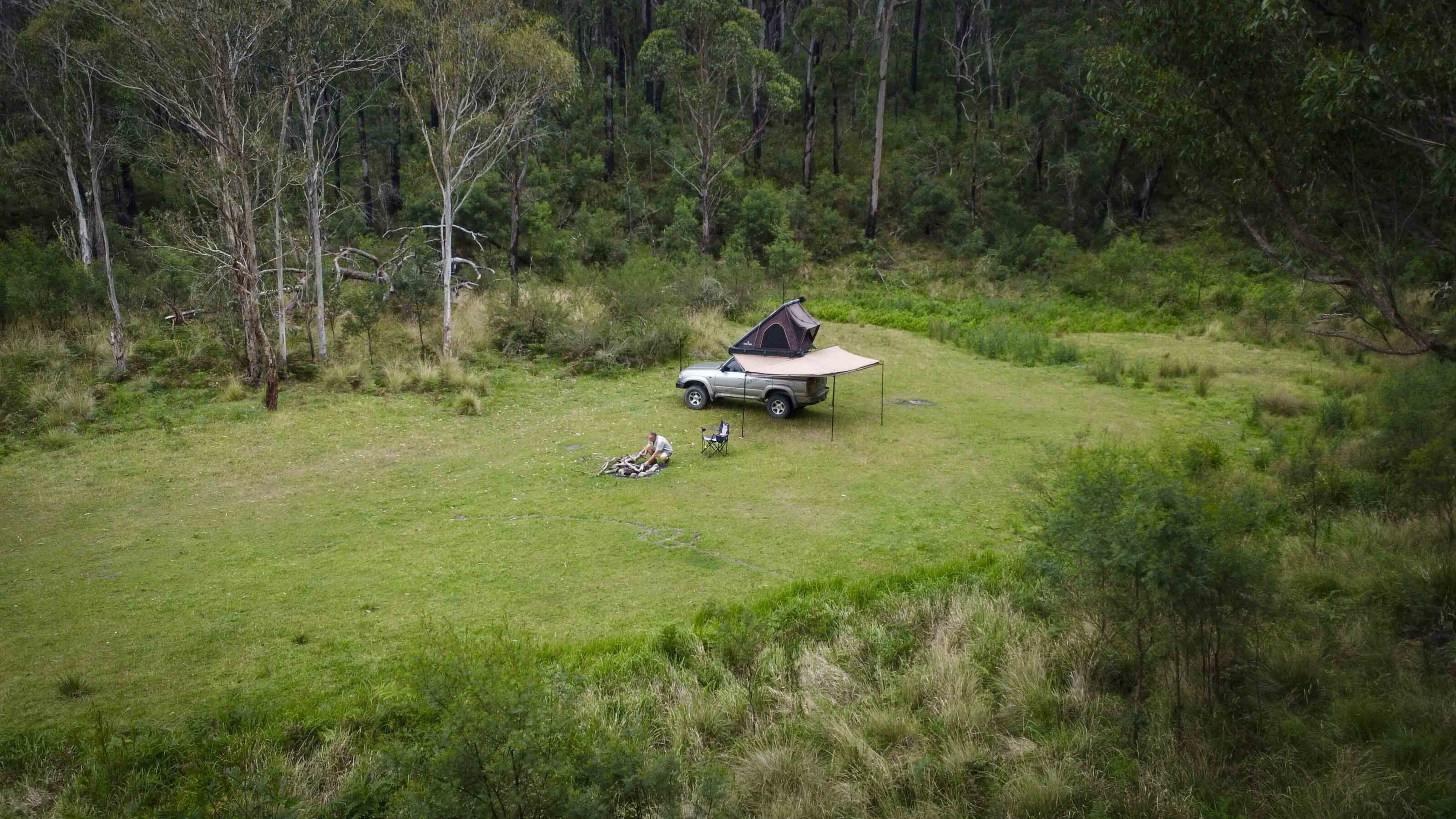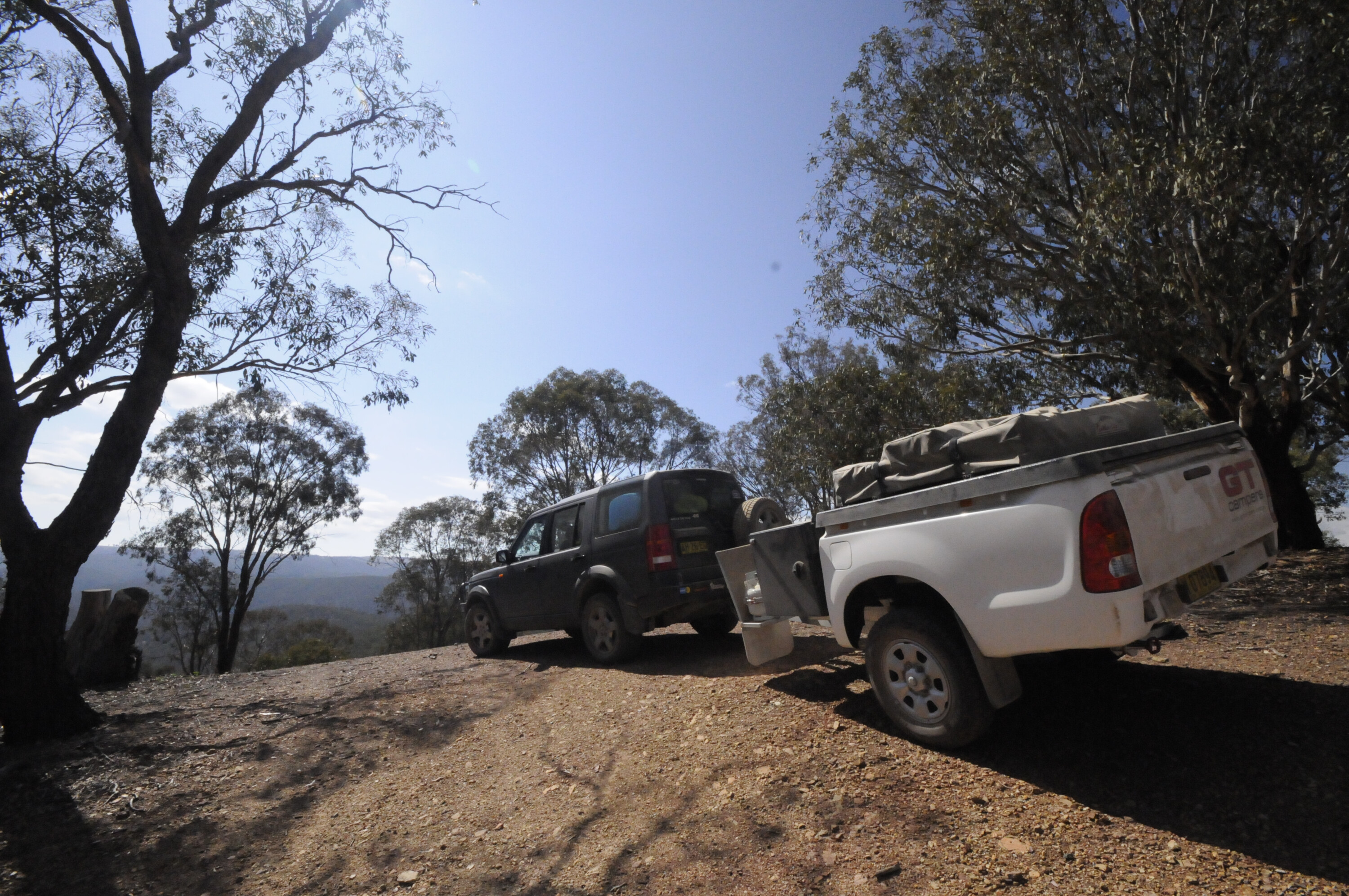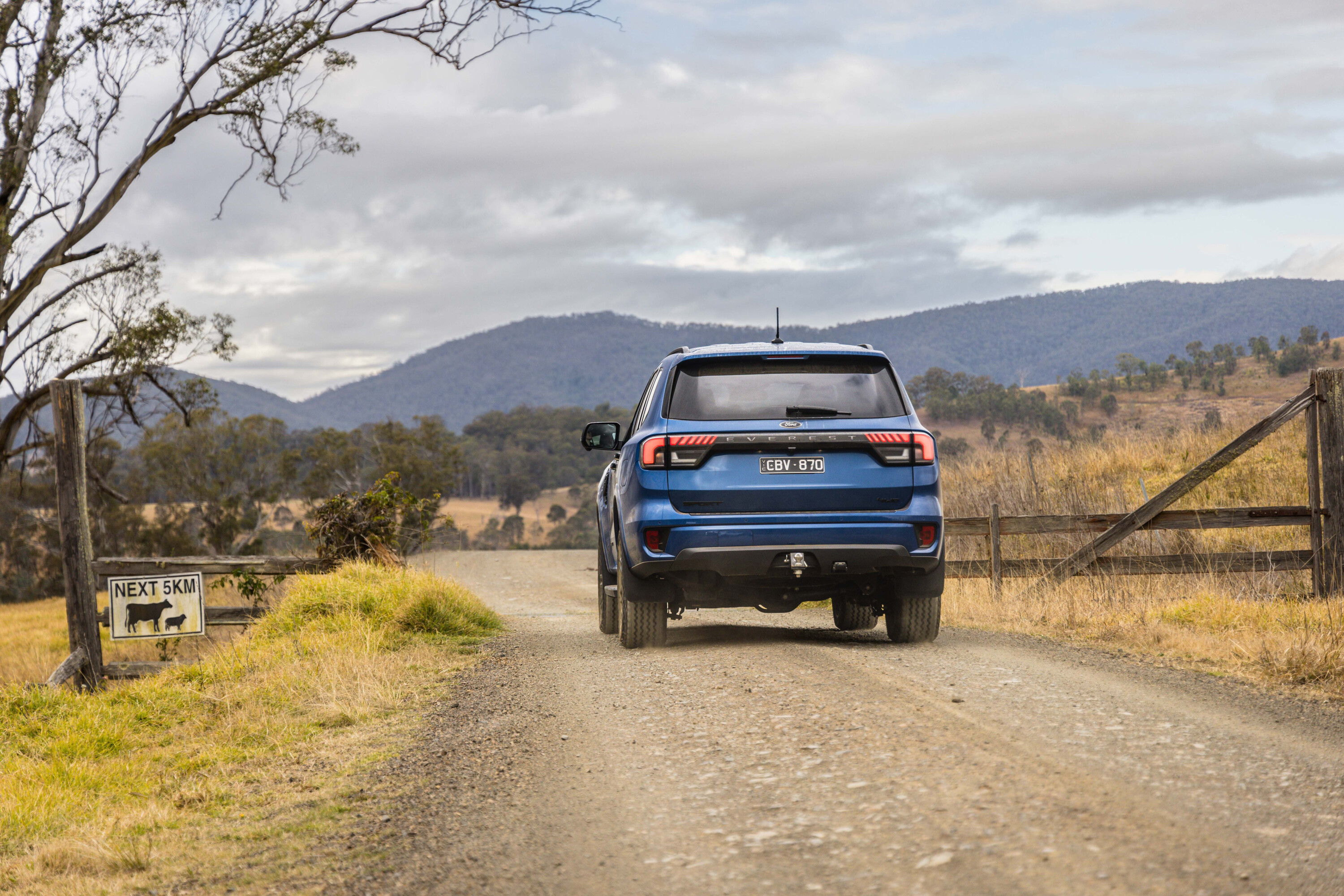Many 4WD clubs have an unwritten rule along the lines of ‘whoever is the first to hold the group up self-nominates to write the trip report’. Well, here I am … that bead-popping incident happened about 500 metres into the first track. First, let’s back up a bit for some background.
Brand Sales Manager for 4X4 Australia, Scott Crowley, has organised a few of these Advertisers’ Trip events over the years. This year it was based at Glenreagh, about halfway between Coffs Harbour and Grafton, NSW.

Scott brought his own VW Amarok V6, but it’s not set-up for 4WD use – more of a dirtbike hauler – so he wisely rotated through the other vehicles as a passenger. Editor Matt Raudonikis was in the magazine’s own black Ford Ranger; Deputy Editor Dean Mellor was in his Defender 300Tdi; Queensland 4X4 Australia representative James Secher and his mate Shannon were in a 3.0-litre Hilux; as was Dave in HEMA’s long-suffering version; Rob from ARB was in a go-faster red Colorado; James and Chris from EFS 4WD were also in a Colorado; Brad of MaxTrax fame was in a current 200 Series; Rob from Narva was in another Ranger; and I, Michael of Piranha Offroad, was in yet another Ranger.
Guiding us was Kev Smith, who hardly needs introduction, being a regular 4X4 Australia contributor and also having 35 years of four-wheel driving experience around the Coffs Harbour area, most lately in his trusty 80 Series Land Cruiser.
Everyone made it to Camp Eagle Eye at Glenreagh on Tuesday night, so after a sleep and breakfast of bacon and egg rolls, we were ready to go for what ended up being a 50km loop of scenic and, in parts, challenging tracks. All of us aired down to be within the 18 to 22psi pressure range, and soon after we were off to the first track for the day.
The conditions in general over the two days were dry, dusty and decently grippy, with the soil being a sandy, gritty light clay, giving way to sandstone rock steps where eroded. Once my vehicle was secured on the first hill of the day, there were two options: try to reseat the bead(s), or change the wheel. My compressor was able to reseat both beads, but the valve stem was damaged and leaking. I pumped enough air into it to get back off the jack and back down the hill onto some more level ground, where the second option was enacted.
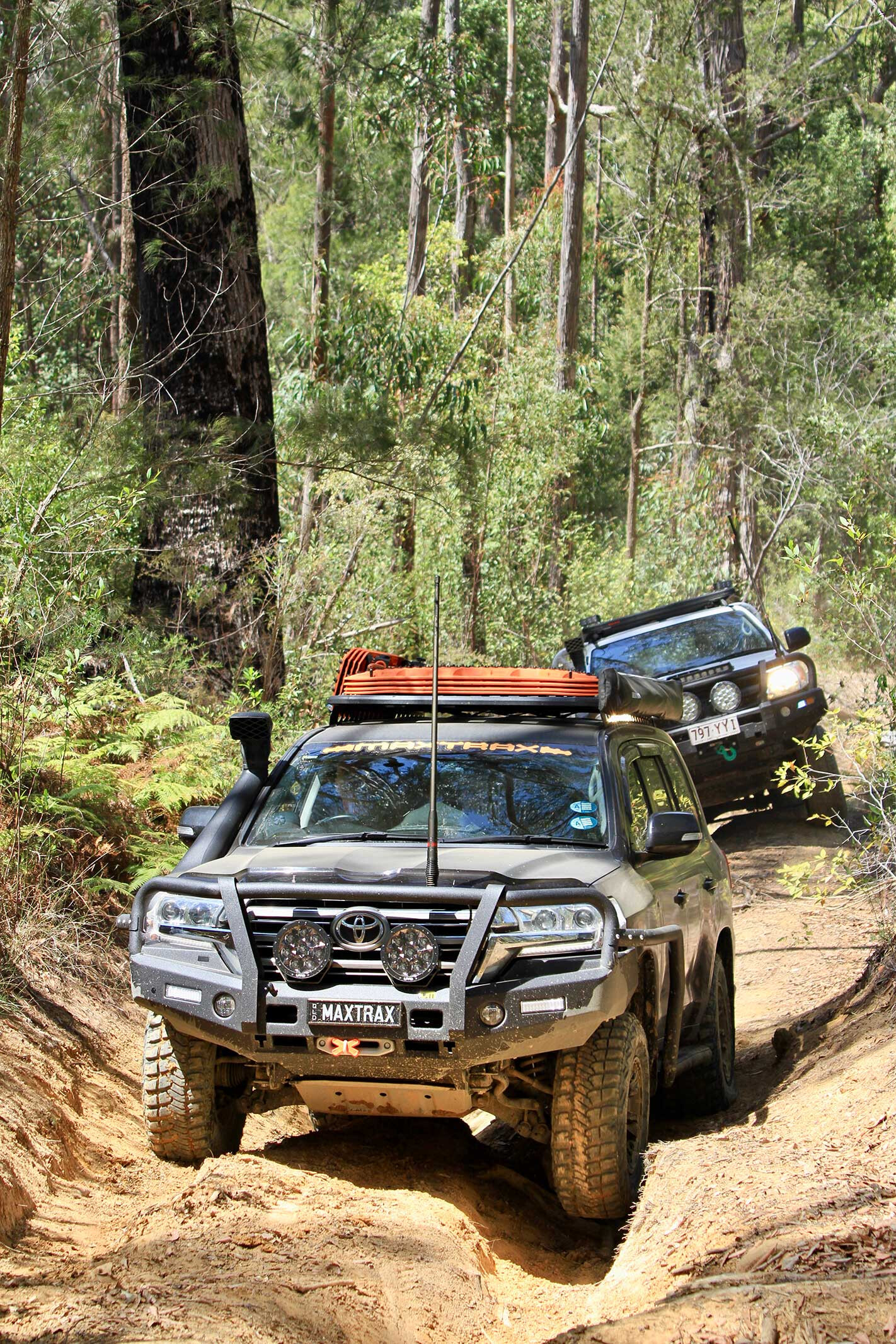
Considering that amongst a group of 10 vehicles like this, there is always a mix of experience levels and familiarity with what the vehicles can do, everyone was doing a great job of dealing with the terrain. In the end, the bead-popping event was the only hold-up due to mechanical issues, and there was no recovery gear used during the two days.
After navigating a few tracks, we soon arrived at the next obstacle, which wasn’t very wide but wide enough that two or more driving lines were presented. In some places, it even made sense to cross from one side of the track to the other to drive a better line. Some slight damage was suffered here when a couple of vehicles wedged their driver-side rear wheels against the same rock; the EFS Colorado munched up the centre cap and the 200 Series copped some battle scars on its alloy rim.
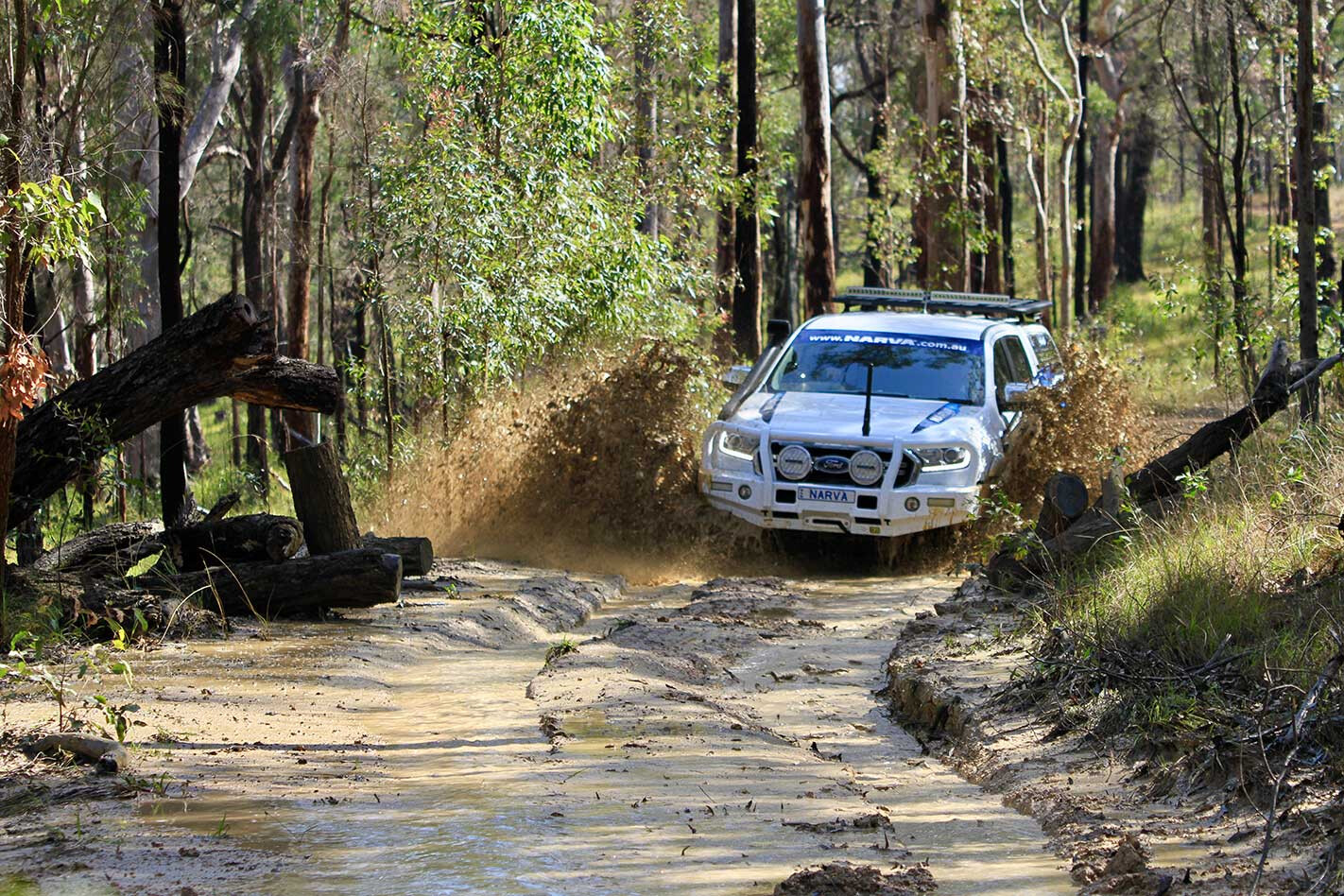
The last tricky bit for the day was much like the other two – rocky, rutted and steepish – and this spot also resulted in some vehicle damage. The ARB Colorado, lacking a rear diff lock and not yet having an Air Locker or two installed, had to be pushed a bit harder and consequently landed on its Summit rear step bar, denting the replaceable side wing.
With the temperature reaching 35°C, a cold beer or two was much appreciated after an early end to the day’s travels. A storm was brewing during dinner, with plenty of lightning and thunder. It poured during the night and sounded like much more rain had fallen than the 14mm the camp caretaker said he measured the following morning.

A smaller group remained for day two, with the EFS boys, HEMA’s Dave and 4×4 Australia’s Queensland rep James and mate Shannon hitting the road early. The overnight rain had cooled things off (only mid-20s today), settled the dust and left a bit of water lying around on the tracks.
This was more of a scenic and historical day, and we had a look at the Glenreagh Mountain Railway, which closed in 1972 after extensive washaway damage. We then drove hidden, almost secret tracks that Kev and a mate had attacked over two days with hedge trimmers, clearing the noxious lantana which will likely be only a temporary measure, as it will, no doubt, soon be back to be impassably overgrown in a year or two.

Dep Ed Dean was having trouble activating his Defender’s ARB air compressor and, consequently, the front and rear Air Lockers. This was only a slight inconvenience for our last bit of tricky track, as good wheel travel and the application of some left-foot braking got the Landy through in the end.
The tricky section was only about 100 metres of undulating sandy, gravelly soil, but it offered a deep trench with plenty of opportunities for crossed-up axles. There was precious little in the way of line choice; you just entered the trench and off you went. ARB’s Rob gave it a really good go in the Colorado, but in the end admitted defeat and took the optional side-slope-inducing bypass.
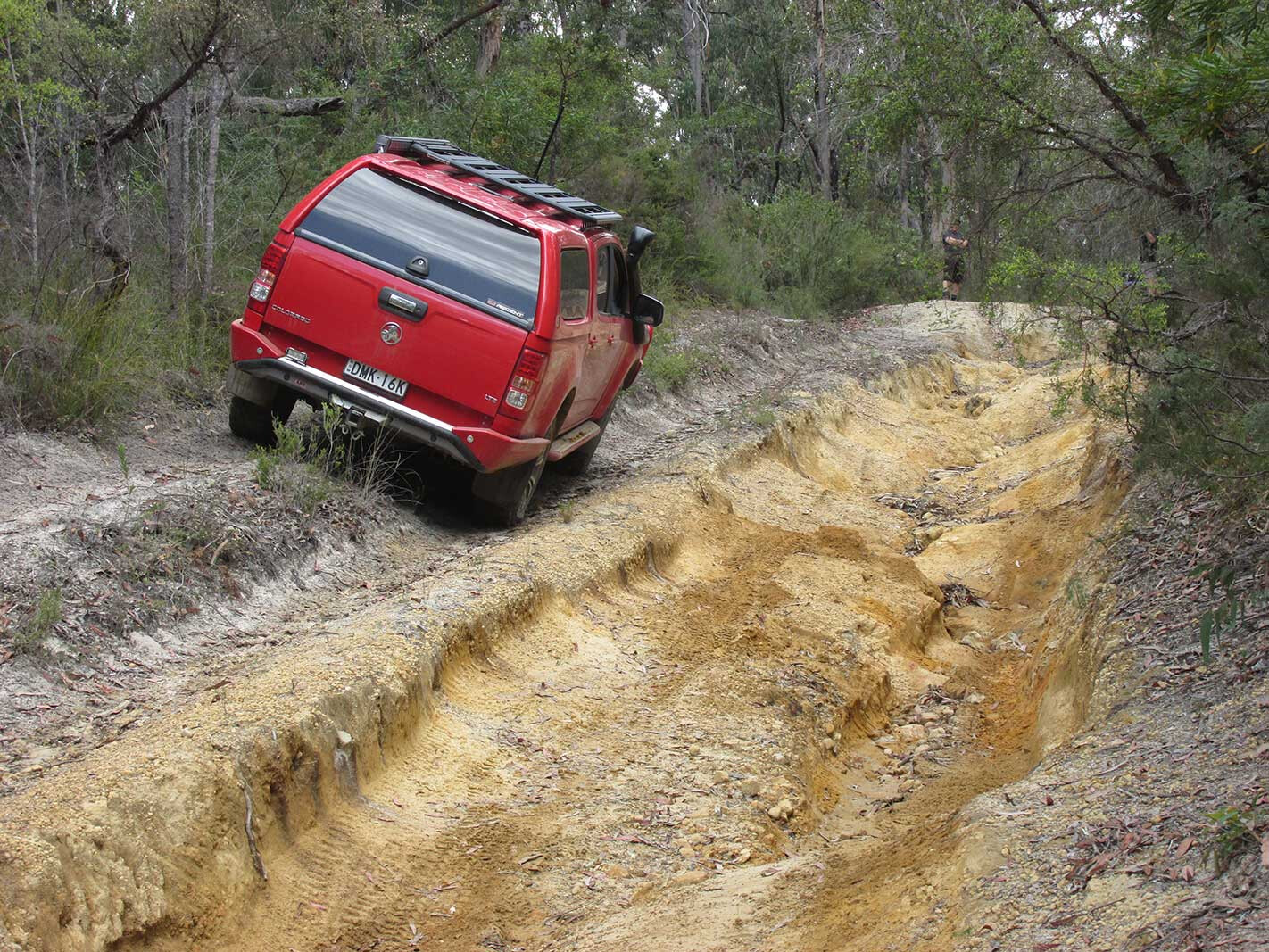
After admiring the view from an impressive lookout we were done for the day, so headed back to camp where most of us started to pump up tyres, except Dean, who started looking into why his compressor wouldn’t switch on. What he discovered was the (self-installed) wiring loom for his Lightforce driving lights had wound up in the steering shaft and stripped bare. The DRL function of the lights is powered from the ignition-switched cigarette lighter socket, and the fuse was blown. The air compressor relay also uses this circuit, so the compressor doesn’t run unless the engine is also running.
We taped up the bare wires, replaced the fuse and the compressor worked once again. I believe Dean had an auto electrician sort the headlight and driving light wiring when he got home. He swore the loom was all cable-tied up and away from the steering shaft, but I reckon he’d better not quit his day job.

